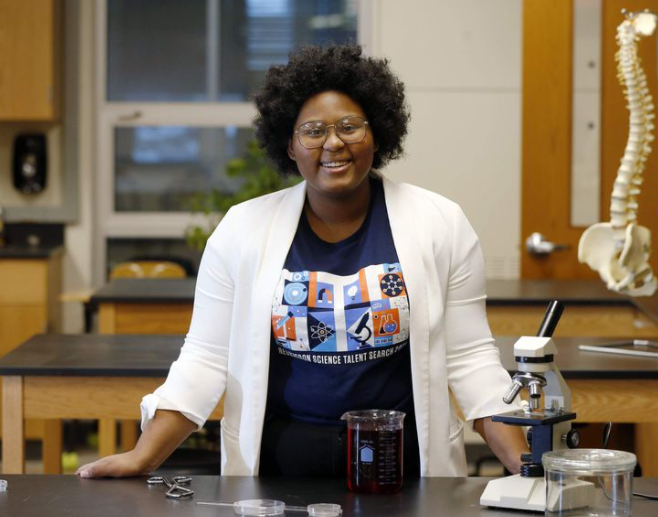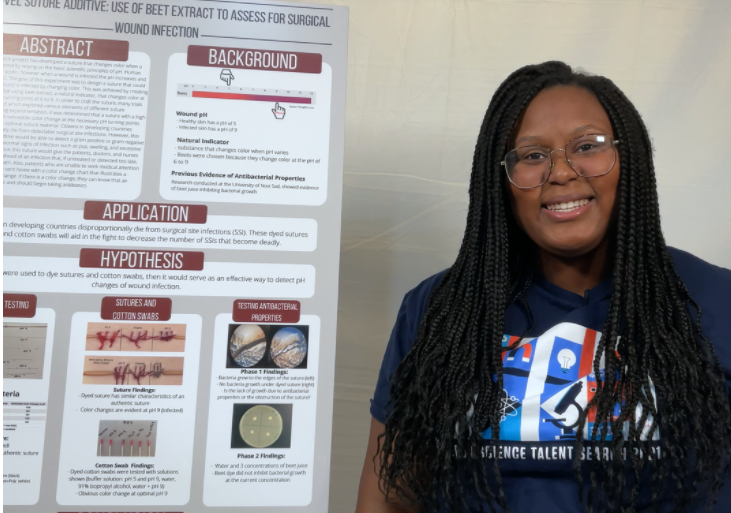
17-year-old Dasia Taylor is applying for a patent (an exclusive right granted for an invention) for her invention of color-changing stitches. The color-changing stitches identify surgical infections so the patient can know when to seek medical help.
Taylor began the development of her invention in October 2019 after reading up on “smart” stitches. “Smart” stitches use conductive materials to monitor any changes in the wound and assess its status. Then, the information the stitches gather gets sent to smartphones or the computers of doctors and patients.
However, many developing countries that would benefit from “smart” stitches lack access to such devices. According to the World Health Organization, 11% of surgical infections occur in low and middle-income countries. The high school student set to fix this problem by inventing color-changing stitches that don’t require technology to detect surgical infections.
In the video above, Taylor said: “With my sutures (a row of stitches which hold together the edges of a wound), those surgical site infections would be able to be detected quicker, thus lowering the amount of people who die from surgical site infections in developing countries.”

Taylor concluded through experimentation, that beets provided the best shade of color for the suture thread. The stitches’ thread change from bright red to dark purple when it identifies an infection in the surgical wound.
“Beets are a natural indicator, and they change at the pivotal moment of eight and nine,” Taylor explained. “Well, our skin is naturally acidic, having a PH of five, so when our wounds are infected, they climb to a PH of nine.”
Her invention has won awards at regional science fairs, and she was named one of the 40 finalists at the Regeneron Science Talent Search.
Currently, Taylor is also in contact with Theresa Ho, a microbiologist at the University of Iowa, to help her implement proper techniques and sterile practices to her project. The high-schooler hopes to attend Howard University to study political science and have a career in law.